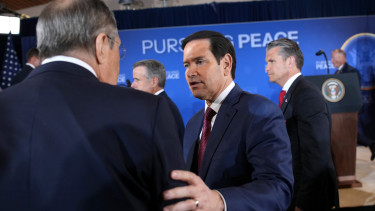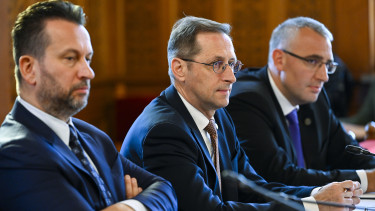Nine arguments for special solutions that can make a difference in Ukraine's recovery

It can be difficult in times of war to remember that, at some point, the fighting will stop. Whether the current war in Ukraine results in a peace treaty or a frozen conflict, Ukraine and its supporters will face the enormous challenge of rebuilding. This will be especially difficult because the infrastructure and economy of a war-torn country is always far from normal and Ukraine lacks the confidence of FDI, investors, entrepreneurs and other employers who are needed to risk capital to rebuild and to restore supply chains. To varying degrees, this lack of confidence resulting from the uncertainty of war is affecting the whole region, including neighbouring countries.
WE’RE CONVINCED THAT SPECIAL ECONOMIC ZONES (SEZ) AND CHARTER CITIES CONCEPTS ARE PART OF THE SOLUTION.
What do we consider SEZ and charter cities?
SEZs are designated areas of a country with (1) enabling infrastructure and land use policies and (2) a distinct tax, regulatory, and administrative environment designed to promote economic growth. Successful SEZs identify major institutional impediments to development in the country at large and pilot reforms that are not yet possible nationwide. They are typically created through new national legislation that carves out exemptions from ordinary laws and allows for a degree of policy experimentation. The country can then apply the lessons learned from the SEZs to influence practices nationwide. Examples of SEZs include Shenzhen, China; the Dubai International Financial Centre, UAE; and Shannon Free Zone, Ireland.
Charter cities take SEZs one step further. First, charter cities start on enough area of land to host a new large city. Secondly, they are able to develop and adopt their own special laws covering a wide range of policy areas with less interference from the national government. They are tools for decentralization and devolution of power and for dramatic social and economic development. At the extreme end, they can be close to city-states, with a semi-autonomous status. One can think of Hong Kong, SAR, as an example. Classic examples include the royal free cities of the Kingdom of Hungary, as well as numerous other city-states across Europe like Florence and the Hanseatic cities, which provided important refuges for merchants and entrepreneurs to engage in commerce during the feudal period.
Reasons for developing SEZs and charter cities in Ukraine and the neighbouring EU countries:
- They would serve as a “regulatory sandbox” that can help with easing bureaucratic paralysis and finding the optimal regulatory approaches for innovative technologies, such as fintech, blockchain, AI and other fast developing disruptive applications.
- They can incubate new policies that are not yet desired nationwide, but that can help the country learn what works and what does not.
- They provide a destination for capital investment that is looking for a place with stable institutions to base their operations while reaching the surrounding European market and shortening the supply chains.
- They can attract talented individuals, such as highly qualified digital nomads, from around the world who are able to work remotely or from home.
- They are the most cost-effective tool for reconstruction, because they: (i) Do not need major public-sector capital investments to get started – instead they focus on creating new institutions, which in turn attract investment in infrastructure, services, and business ventures; and (ii) Are financially self-supporting because public revenue will be sourced from the rise in land value, rather than foreign aid, government transfers, or new taxes.
- Can attract talented Ukrainians back home (in case of a Ukrainian SEZ) who are currently working or seeking work in the rest of Europe.
- They can also serve as a “refugee city” or safe haven in host countries for people driven from their homes where they can live, work, build homes, and start businesses. This approach changes refugees from being seen as a cost to a benefit to the economies around them because they will provide for themselves and stimulate growth. Also, this approach responds to the concerns of people who do not want a multicultural environment or, at least, would like to slow the pace of cultural change. Since the refugees are invited to live and work in designated areas, other parts of society aren’t compelled to witness and live cultural change too fast. They revitalize the areas they are located in with new investment, jobs, and economic activity, which can help repopulate the region.
- They can help facilitate Ukraine’s integration with Europe by piloting new institutions that are aligned with EU policies and regulations.
- They provide a quick solution to a desperate need. For instance, an SEZ or charter city could adopt flexible regulations that allow for rapid development of a seaport that serves as a strategic hub for avoiding a Russian naval blockade – filling in for the role that Constanta tried to serve last year.
It’s inevitable for every decisionmaker to find adaptation ways for their country in these historical times.
We understand that these thoughts might be a little bit unusual for some policymakers of this region but it’s necessary to think about some out-of-the-box solutions to the also extraordinary challenges.
Of course, our suggestions aren’t the only way to rebuild the economy of these territories but we witnessed successful application of SEZs throughout the world. They can be strong and valuable parts of a suitable policy mix. Besides the economic and regulatory benefit of special economic zones and charter cities, they have the advantage that even different sides of the polarized political spectrum can find an applicable compromise in using them.
Authors:
Michael Castle-Miller is Partner at Dentons Global Advisors-Albright Stonebridge Group
Dávid Szebeni is Partner and Director of Strategy at Enrawell Group
THIS IS 'ON THE OTHER HAND', PORTFOLIO'S OPINION COLUMN.
This article reflects the views of the author(s), which do not necessarily reflect those of the Portfolio editorial team.
Cover photo: Getty Images











